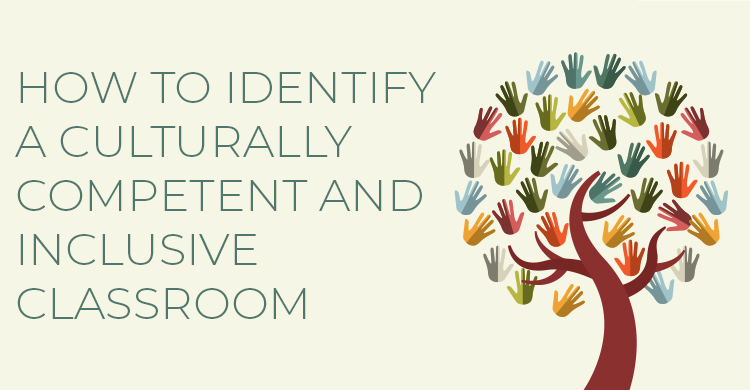Based on Step In, Step Up
I first learned about women not supporting other women in leadership back in college. As my friend and I, duly-elected treasurers of our women’s dormitory, fought the cold winds of a January day in Minnesota, trudging the mile to the bank with heavy backpacks full of coins to deposit from the snack machines, we laughed about the feedback the dorm officers had just gotten.
“They’re in it for themselves.” (Yep, slushy walks and cleaning up stale beer after parties was so selfish…)
“They’re all a big clique.” (Yep, and who hadn’t noticed we’d been close friends for three years when they voted for us.)
“They haven’t done a thing.” (Nope, just gotten the administration to refurbish all the common lounges out of college, not dorm funds, and more.)
You get the picture—and the tendency of women to criticize other women hasn’t necessarily improved since my college days. My coauthor, Barbara K. Watterston, found that women often rated other women lower than they do male leaders for empathy and other skills that we usually attribute to women. Is it because we expect more of each other than we do of men? Or do we expect a “bye” on certain behaviors from leaders who look more like us?
We aren’t sure, but supporting women in leadership needs to start with women, even as we work to change education norms around what leadership looks like. Holland (2017) points out, “In the workplace, women are expected to get ahead by some mysterious combination of femininity and intelligence while simultaneously getting things done and disguising drive” (p. 219). This is the double bind women face:
- If women assert themselves, which good leadership requires in some form, they’re labeled as aggressive (or worse) for the same behaviors that are applauded in men.
- If women are more empathetic than is seen as usual for leaders, then they’re seen as “soft” or “too emotional.”
- Either way, they’re criticized. “Likeable” isn’t a criterion applied equally to male and female leaders.
So, what can we do about this? I’d like to suggest we borrow from an improvisation game called “Yes, and…” It’s a great way to open up to possibility thinking. Yes, and…with a little practice, I think we can use it to change discourse about how women lead. If you learn to play, I think you’ll benefit in two ways:
- You’ll become more attuned to unconscious biases and common criticisms.
- You’ll have a plan for countering them.
And, if you practice the game with others, you’ll build a coalition of “Yes, and…” players who can change the discourse in your workplace. Here’s how to play.
Step 1: Capture the Criticisms
By yourself or with others (male or female), make a list of the stereotypical criticisms you’ve heard about female leaders. Think school principals and superintendents, especially ones you’ve heard voiced in your learning community, but also politicians and business leaders.
The following quotes, from female teachers in conflict with female principals who asked me to facilitate conflict resolution, are typical:
- “She’s too direct. People need to hear what’s going well.”
- “She expects us to be as driven as she is, no time for fun.”
- “She’s power-hungry.”
Aggression, of course, is often mentioned, as is supposed overuse of traditionally feminine traits, such as being empathetic.
Step 2: Reframe the Rebukes as Resources
Most of the common critiques involve behaviors that are on continuums and for which societal expectations set different qualities and quantities for men and women (Gerzema & D’Antonio, 2013). Reframing them as strengths provides your “card deck” for the game of “Yes, and…”
- “Too direct” can be reframed as “utilizing clarity around expectations” or “efficiency” or “candor.”
- “Driven” can be reframed as “dedicated” or “energetic.”
- “Power-hungry” can be reframed as “gathering resources or support for a specific vision.”
In their book The Athena Doctrine, John Gerzema and Michael D’Antonio (2013) have compiled lists of characteristics that people around the world connect more with men or more with women. You might use their list of those characteristics that are also connected with great leaders to brainstorm strengths.
Step 3: Pinpoint the Positives
Whether the one being critiqued is yourself, someone else, or women in general, think through what has been accomplished so you can employ facts as you play “Yes, and…” What wasn’t happening before this person took charge? Who was ignored? Has something been accomplished even though people were hoping for some other change? Think through everything from staff relationships or how naysayers are handled to the use of meeting time and actual progress on multiple fronts. What aren’t people seeing?
Remember my dorm leadership example? We hadn’t made much noise about the hours we spent on tasks such as bank deposits (maybe we should have; maybe someone with a car might have offered a ride), nor did we publish a list of problems we’d solved. What is going unnoticed in your environment?
Step 4: Generate Your Game Moves
While you won’t anticipate every future critique, readying your responses for common ones will increase your agility for improvising responses.
Your goal? Instead of arguing back, trying to convince the person who made the critique that they’re biased against women, or otherwise dismissing the person’s experiences, acknowledge their perspective and move the conversation ahead at the same time. Note that tone of voice may matter greatly. Think, “Yea…ss, and…”
Here are three samples for the critiques I cited in Step 1:
- “She’s too direct. People need to hear what’s going well.” “Yes, and because she’s been direct about expectations—such as what student engagement actually looks like—it only takes a few moments for her to communicate helpful strategies to me after an observation.”
- “She’s too driven. No time for fun.” “Yes, and it’s amazing how much we’ve accomplished, isn’t it? I didn’t think we could [turn students into happy readers/decrease referrals without lowering behavior standards/make such good use of collaborative time/etc.]
- “She’s power-hungry.” “Yes, and I’m amazed how she’s used that power to streamline the initiatives we’re focusing on, actually saying no to people at the district offices!”
See how it works? If you’re afraid that “Yes, and…” will begin to sound too stilted or repetitive, here are some alternative stems:
- “Yes, and I’ve been noticing that…”
- “Yes, and I think that fueled our success with…”
- “Yes, and don’t you think that makes her…”
- “Yes, and isn’t that a nice contrast to…”
- “Yes, and aren’t you glad she isn’t ignoring…”
A Game-Changing Game
Using “Yes, and…” is a strategy for changing discourse. It’s insane to continue the myth that women should change their leadership style to fit in to current leadership structures—if they do, we may be asking them to lead from their weaknesses instead of their strengths. And that makes no sense. Here, we’re changing the environment, ensuring that more leadership styles are embraced, and supporting women who have stepped forward to lead. And hopefully, empowering more women to take that step.
And if someone says to you, “But haven’t we increased the percentage of principals and superintendents who are women?” you can reply, “Yes, and…we can do so much more to ensure traditionally feminine emphases in leadership, such as looking at the big picture and emphasizing relationships as much as we do tasks, become the norm in policy. And that girls and boys see more role models of female leaders—and male teachers. And to ensure that we have the right criteria for judging male and female leaders. And…”
References:
Gerzema, J., & D’Antonio, M. (2013). The Athena doctrine: How women (and the men who think like them) will rule the future. San Francisco: Jossey-Bass.
Holland, J. (2017). Ambitchin’. In R. Romm (Ed.), Double bind: Women on ambition (pp. 213–224). New York: Liveright.[author_bio id=”153″]






